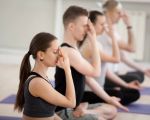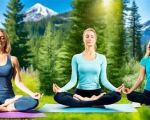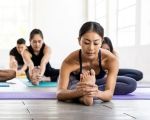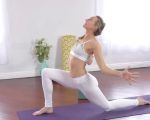- 1-Building-a-Strong-Foundation
- 2-Importance-of-Proper-Alignment
- 3-Breath-Control-and-Mindfulness
- 4-Gradual-Progression-and-Consistency
- 5-Using-Props-and-Modifications
- 6-Learning-from-Expert-Instructors
- 7-Inspiring-Personal-Stories
1. Building a Strong Foundation
Mastering challenging yoga poses begins with establishing a solid foundation. This means cultivating strength, flexibility, and balance through foundational poses and consistent practice. Without this base, attempting advanced poses can lead to injury or frustration.
Practicing foundational postures regularly helps prepare muscles and joints for more complex movements, making progression safer and more achievable.
2. Importance of Proper Alignment
Proper alignment is critical when approaching challenging yoga poses. Aligning your body correctly ensures that the right muscles are engaged and prevents strain. Paying close attention to details like foot placement, spine position, and shoulder engagement can dramatically improve pose stability.
Utilizing mirrors or recording yourself can help monitor alignment and adjust as needed during practice.
3. Breath Control and Mindfulness
Integrating controlled breathing techniques with mindfulness significantly enhances your ability to hold and transition through difficult poses. Breath regulates tension and supports muscle engagement, while mindfulness helps maintain focus and calm.
Techniques such as Ujjayi breathing can deepen your practice, allowing you to sustain poses longer and with less fatigue.
4. Gradual Progression and Consistency
Progression in yoga is a journey that requires patience and consistency. Trying to rush into advanced poses without adequate preparation can be counterproductive. Incrementally increasing difficulty through modifications and practice routines is key.
Setting realistic goals and maintaining a regular practice schedule helps build confidence and physical capacity over time.
5. Using Props and Modifications
Props such as blocks, straps, and bolsters offer valuable support for mastering challenging yoga poses. They provide stability, enhance reach, and reduce strain, allowing practitioners to safely explore new postures.
Modifications tailored to individual flexibility or strength levels ensure that progress is inclusive and injury-free.
6. Learning from Expert Instructors
Guidance from experienced yoga instructors can accelerate your mastery of challenging poses. They offer personalized feedback, correct technique, and introduce nuanced variations that textbooks or videos may overlook.
Online platforms like Free Yoga Links provide access to expert tutorials and classes, making professional instruction more accessible.
7. Inspiring Personal Stories
Many yogis share transformative experiences in overcoming difficult poses. For example, Sarah recounts how consistent practice and focused breathing helped her conquer the Crow Pose after months of effort. Stories like hers highlight the blend of determination and technique essential to mastery.
These narratives inspire and remind us that every yogi’s journey is unique and rewarding.








